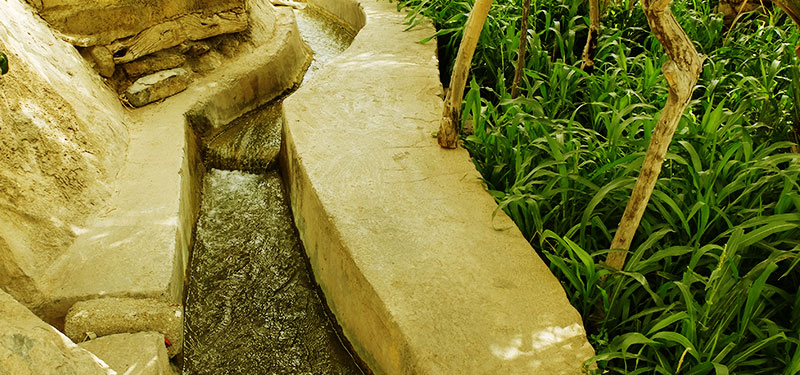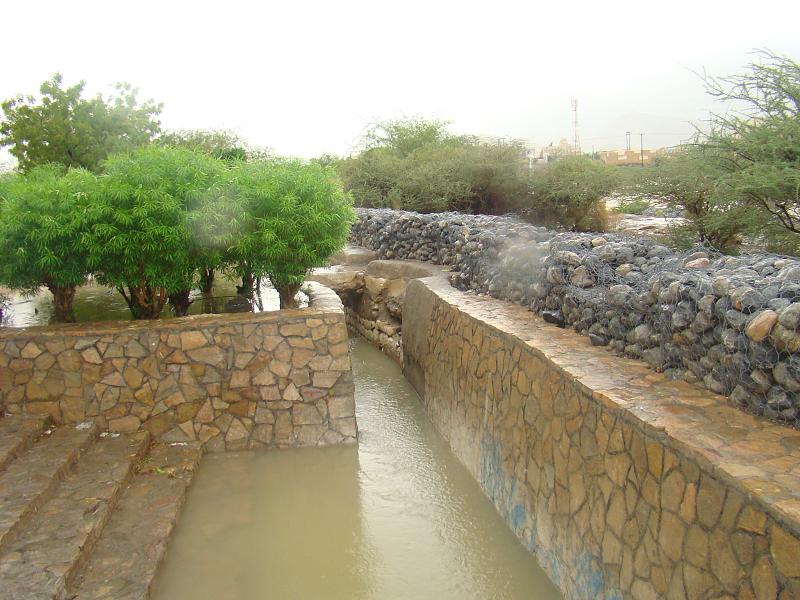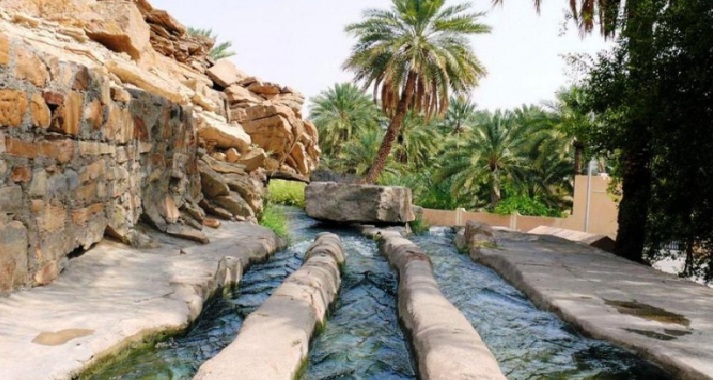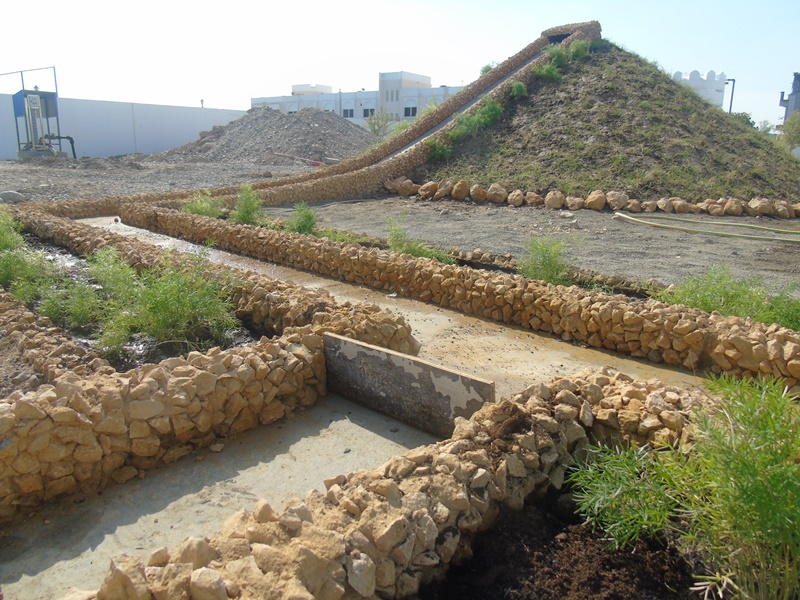Aflaj System
A falaj in Oman refers to water that runs through a channel dug in the earth. The source of falaj water is groundwater found in the subsoil or valleys. The plural of the word ‘falaj’ used in Oman is ‘aflaj’, which is a comprehensive term used to denote a system of irrigation. The falaj is an original Omani irrigation system, deep-rooted in the country’s land and history.
The Falaj Irrigation System relies on water stored underground. It is extracted in a simple manner without the use of machines, and is then used in agriculture and all other essential uses. The aflaj are divided into three main types:
Dawoodi Falaj:
These are long channels dug underground that run for several kilometres. Their depth usually reaches up to tens of metres, so water is present in these channels all year round.
The most important of these falaj are: Falaj Al Khatmayn and Falaj Daris in A’Dakhiliyah Governorate. These two appear on the World Heritage List.
Ghaili Falaj:
These falaj receive their water from ponds or running water. Their depths do not exceed 3-4 metres. Water quantities increase in these falaj directly after rainfall and usually dry up quickly during extended dry periods.
Ayni Falaj:
These falaj draw their water directly from the springs (wells), including hot springs. The importance of these falaj depends on their water quality, which varies between hot and cold, and between fresh drinking water, saline water, and between alkaline water mixed with valley water, considered suitable for agriculture. There is another kind of spring that contains varying proportions of mineral salts suitable for water treatments and therapies.
The most important of these falaj are: Falaj Ayn Al Kasfah in Wilayt Ar Rustaq, Falaj Al Hamam in Wilayt Bawshar and Falaj AlJaylah in Wilayt Sur in A’Sharqiyah South Governorate (Eastern Region). This last falaj appears on the World Heritage List.




